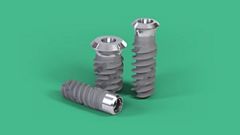Straumann at the EAO 2015
Stockholm, Sweden - September 24-26, 2015
"Evidence based treatment solutions"
Straumann Satellite Industry Symposium - September, 24th, 2015
Introduction into the clinical and scientific aspects of the corporate forum - Chatchai Kunvisarut, DDS, MS
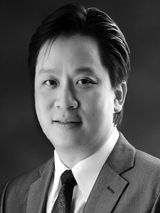
Moderator: Chatchai Kunvisarut, DDS, MS, Thailand
Biography
Chatchai Kunvisarut received his DDS (with honors) from Prince of Songkla University, Thailand in 1994. He received Master of Science in Prosthodontics from the University of North Carolina at Chapell Hill in 2000. During his training , he was awarded the 2nd place John J Sharry Prosthodontics Research Award from the American College of Prosthodontics and Turner Award from University of North Carolina. In 2002 he received the ITI scholarship and completed his implant training at the Center for Implant Dentistry, University of Florida.
He is an ITI fellow and ITI Study club co-ordinator for ITI South East Asia section since 2011. He is currently working as a Deputy Dean for Graduate School, Mahidol University, Program director of General Dentistry Residency program and Clinical director for Joint Master program in Implant Dentistry and Dental Surgery, between Mahidol University and, International Medical College, Munster, Germany.
Presentation #1 - Indication based Solutions for hard and soft tissue regeneration - Hom-Lay Wang, DDS, MSD, PhD
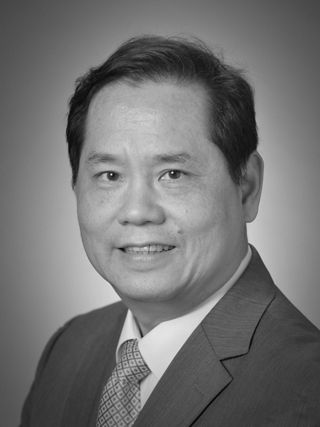
Speaker: Hom-Lay Wang, DDS., MSD., Ph D, US
Biography
Hom-Lay Wang, DDS., MSD., Ph D, Collegiate Professor of Periodontics, Professor and Director of Graduate Periodontics at the University of Michigan. He published more than 25 book chapters/invited reviews and more than 350 scientific articles. Dr. Wang is a member of Leadership Development and Qualification Committee as well as a Consultant of Scientific Oversight Committee for the American Academy of Periodontology and also serves as a Chair of Website Educational Committee as well as a member of Clinical Innovation Committee for the Academy of Osseointegration, is a Diplomate and a Former Chair and Director of the American Board of Periodontology and a Fellow of American College of Dentists as well as American Academy of Osseointegration. He serves as an Associate Editor for The International Journal of Oral & Maxillofacial Implants and Founding Editorial board member for Clinical Advances in Periodontics, Editorial Board member for the Journal of Periodontology, Clinical Oral Implants Research, International Journal of Periodontics & Restorative Dentistry, Journal of Clinical Periodontology, Compendium of Continuing Education in Dentistry and many others.
Abstract
About every second implant treatment needs bone augmentation pre-, during or after implant placement to prevent ridge resorption and to augment ridge width and height for better implant placement and final esthetic appearance.
Soft and hard tissue grafts are currently used for many different implant clinical procedures. These include but are not limited to socket augmentation, immediate implant placement, guided bone regeneration (i.e., sandwich bone augmentation), vertical bone augmentation and sinus augmentation.
This presentation will explain the decision tree for selecting the proper augmentation technique and discuss what kinds of bone grafts and barrier membranes are better suited for these different procedures. Scientific evidence and clinical examples related to these clinical suggestions will be demonstrated.
Presentation #2 - Single implant restorations - which solution in which indication? - Prof. Dr. med. dent. Irena Sailer
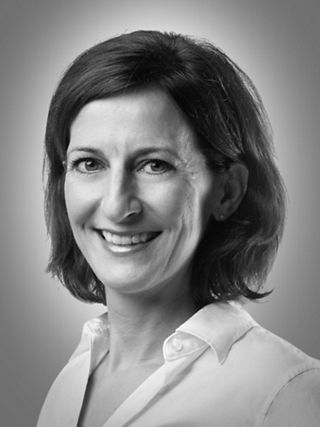
Speaker: Prof. Dr. med. dent. Irena Sailer, Switzerland
Biography
Irena Sailer is Professor and Head of the Division of Fixed Prosthodontics and Occlusion at the University of Geneva. She received her dental education and Dr. med. dent. degree from the Faculty of Medicine, University of Tübingen, Germany in 1997 and 1998. In 2003 Dr. Sailer was made Assistant Professor at the Clinic of Fixed and Removable Prosthodontics and Dental Material Sciences in Zurich, where she was Associate Professor between 2010 and September 2013. In 2007, Dr. Sailer was a Visiting Scholar at the Department of Biomaterials and Biomimetics, Dental College, New York University, USA. Additionally, since 2009 she has held an Adjunct Associate Professorship at the Department of Preventive and Restorative Sciences, Robert Schattner Center, School of Dental Medicine, University of Pennsylvania. Philadelphia, USA
Abstract
Single implant restorations need to fulfill various demands in anterior and posterior regions, influencing the selection of the type of implant restoration and the materials used. In the anterior region predominantly esthetic factors are of importance for the selection of components and materials. In posterior region high strength of the implant restoration is the determining factor for satisfying outcomes. Evidence exists today with respect to the indications of cemented and screw-retained single implant restorations, and regarding all- ceramic and metal-ceramic implant restorations. Yet, more recently, the evolving CAD/CAM technology opened up new horizons with respect to new materials and fabrication techniques for implant restorations. Monolithic restorations out of ceramics like zirconia or lithium disilicate glass- ceramics in combination with a titanium resin base (e.g. Variobase) offer new ways to restore implants. These restorations can be fabricated lab-side or even chair-side. In addition, new composite-ceramic hybrid materials were introduced, delivered as prefabricated ingots for chair-side or centralized CAD/CAM procedures. A trend towards an increasing application of these more recent types of restorations can be observed. The current evidence will be presented in the present lecture and actual treatment recommendations will be discussed.
Presentation #3 - Implant based Solutions for edentulous patients. Where have we come from and where are we now? - Dr. Daniel Wismeijer
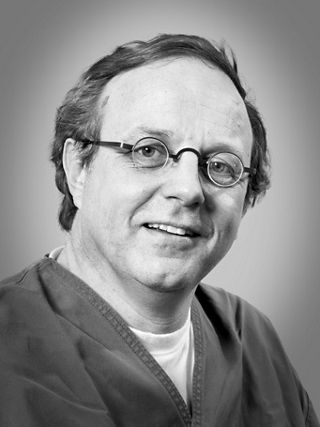
Speaker: Dr. Daniel Wismeijer, The Netherlands
Biography
Studied dentistry at the University of Nijmegen Dental School from 1979-1984 After graduating he joined the department of Oral Function and worked in de section of special dental care and Maxillofacial Prosthodontics. He received his PhD in 1996 on the subject of overdentures on dental implants; “The Breda Implant Overdenture Study”. In that year he left Academia. From 1985 till 2006 he worked at the Amphia teaching Hospital in Breda in the department of Oral Surgery and Maxillofacial Prosthodontics.
In 1985 he started a general dental practice which since 1990 is a referral practice for Oral Implantology. Has been president of the Dutch Prosthodontic Association and the Dutch Association for Gnathology. He is an ITI fellow since 1993. In the ITI he has served as a member of the ITI education Core Group for 8 years. Since 2012 he is a member of the ITI research committee in 2013 has been elected as an ITI board member at large and since 2015 he has been elected chairman of the ITI education committee.
In 2006 he accepted the position of Professor of Oral Implantology and Prosthetic Dentistry at ACTA Amsterdam which he combines with his referral practice. He is the head of the section of Oral Implantology and Prosthetic Dentistry.
Abstract
Protocols for the treatment of edentulous patients with removable or fixed implant prostheses present a variety of options regarding the number of implants, their strategic distribution and the final prosthetic design. These clinical considerations are generally assigned to the highest level of importance. The implant prosthetic design should ideally result from a careful patient selection and diagnostic planning. This allows for the selection of appropriate artificial teeth and their emergence profile as well as occlusion, phonetics, aesthetic parameters and lip and facial support. These factors determine treatment feasibility and the patients approval of the proposed treatment plan. Implant borne overdentures in the maxilla and mandible, wrap around hybrid screw retained fixed dentures, PFM fixed dentures and milled zirconia based fixed dentures as well as the related planning and implant choice will be discussed. In this presentation the clinical considerations involved in these indications will be discussed and placed in an evidence based prospective.


